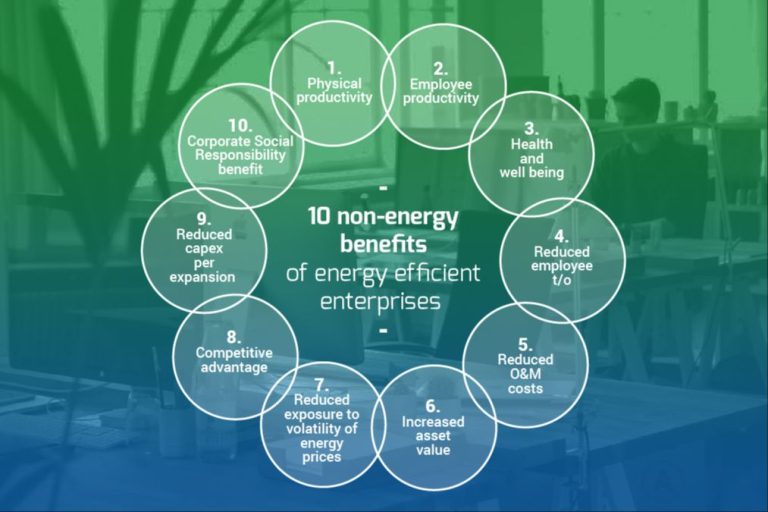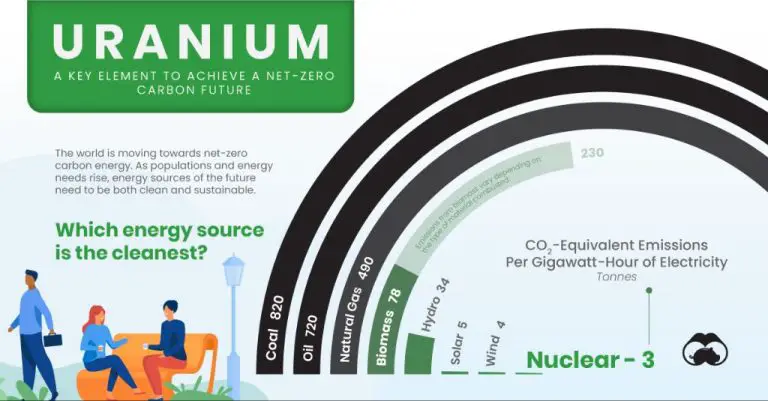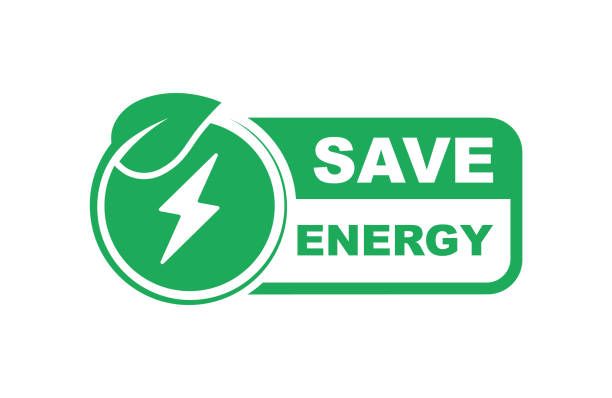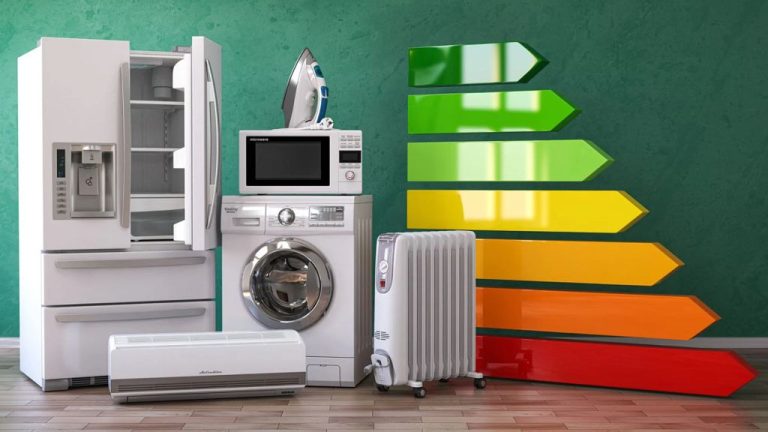What Is Energy And Environmental Sustainability?
Defining Energy Sustainability
Energy sustainability refers to the ability to provide reliable and affordable energy services for both the present and future without adversely impacting the environment or depleting resources. According to Rosen (2021) from https://www.ncbi.nlm.nih.gov/pmc/articles/PMC8060340/, energy sustainability involves meeting the energy needs of the current generation without compromising the ability of future generations to meet their own energy needs.
The key goals of energy sustainability include providing equitable access to energy, enhancing efficiency, increasing the use of renewable sources, and mitigating greenhouse gas emissions and other environmental impacts. As Grigoroudis (2019) explains in this source, it involves balancing the pillars of energy security, energy equity, and environmental sustainability.
Pursuing energy sustainability is crucial to tackle issues like climate change, pollution, and resource depletion. By transitioning to clean, renewable sources of energy and promoting conservation, we can meet current and future energy needs in an environmentally responsible manner.
Defining Environmental Sustainability
Environmental sustainability refers to the responsible interaction with the planet to avoid depletion or degradation of natural resources and allow ecosystems to thrive for current and future generations (1). The concept of environmental sustainability aims to improve human well-being by preserving the natural environment and operating within the planet’s ecological carrying capacity (2).
The key goals of environmental sustainability include (2):
- Protecting and restoring ecosystems and preserving biodiversity.
- Using renewable natural resources like water, soils, and forests at sustainable rates.
- Dramatically reducing pollution and waste generation.
- Promoting sustainable land use planning and development.
- Transitioning to a circular economy with sustainable production and consumption.
- Mitigating and adapting to climate change.
Environmental sustainability ensures responsible stewardship of the natural environment to allow thriving ecosystems, resources, and ecological processes for current and future generations.
(1) https://www.inspirecleanenergy.com/blog/sustainable-living/environmental-sustainability-definition
(2) https://are.berkeley.edu/courses/ARE298/Readings/goodland.pdf
Current Energy Sources and Impacts
The world primarily relies on fossil fuels like coal, oil, and natural gas to meet energy needs. Fossil fuels supply over 80% of total primary energy use globally as of 2018 (EEA). However, the extraction, refining, and combustion of fossil fuels leads to substantial environmental impacts.
Burning fossil fuels produces air pollutants like sulfur dioxide, nitrogen oxides, particulate matter, mercury, and other heavy metals. This leads to smog, acid rain, and health issues (EPA). Fossil fuel use also emits large quantities of carbon dioxide, the primary greenhouse gas causing climate change.
Nuclear power supplies about 10% of the world’s electricity but raises concerns about radioactive waste disposal and nuclear accidents. Uranium mining can also pollute water sources (UCSUSA).
Renewable energy from sources like wind, solar, hydropower, and geothermal cause fewer harmful emissions. But they have their own environmental considerations around land use, habitat loss, and water use that require proper siting and management.
Renewable Energy Overview
There are several major types of renewable energy sources that provide alternatives to fossil fuels. These include:
Solar Energy
Solar energy comes from the radiant light and heat from the sun. It can be harnessed through solar panels which convert sunlight into electricity. Solar power is clean, renewable, and abundant. However, it relies on sunny weather and currently has high equipment costs. [1]
Wind Energy
Wind turbines convert the airflow from wind into mechanical power which drives a generator to produce electricity. Wind power is plentiful, renewable, and causes no pollution. But it can be intermittent and land-intensive for utility-scale wind farms. [2]
Geothermal Energy
Geothermal energy harnesses the natural heat inside the earth to provide heating and electricity generation. It provides constant reliable power. However, geothermal sites are limited to certain geographies and can produce CO2 emissions.
Hydropower
Hydropower utilizes the movement of water to generate electricity using turbines and generators. It’s a stable, reliable, and affordable source. But dams can impact wildlife habitats and river ecosystems.
Biomass
Biomass converts organic matter like plants, wood waste, or garbage into energy through direct combustion or conversion to gas or liquid biofuels. It utilizes waste materials But burning biomass emits carbon pollution.
Energy Conservation
Energy conservation involves reducing energy consumption through efficiency improvements and changes in usage habits.
There are many ways individuals and households can reduce their energy consumption and save money on utility bills (Constellation, 2023). Some key methods include:
- Replacing traditional light bulbs with LED lighting
- Using smart power strips to cut phantom load from electronics
- Installing a programmable or smart thermostat
- Washing clothes in cold water and air drying when possible (FCS Cornell, 2023)
- Unplugging appliances and electronics when not in use
- Taking shorter showers
- Using microwaves, pressure cookers, and crockpots instead of the stove or oven
- Turning off lights and using natural daylight when possible
Practicing energy conservation provides many benefits for sustainability (Energysage, 2023). It reduces the depletion of non-renewable energy sources like coal, natural gas, and oil. Energy conservation also decreases carbon emissions that contribute to climate change. In addition, reducing energy demand through conservation lessens the need to build new power plants and energy infrastructure. On an individual level, households can save significant money on their energy bills through conservation.
Challenges & Barriers to Sustainability
Transitioning to more sustainable energy sources faces many technical, economic, and social challenges. Some key barriers include:
Technical barriers such as the intermittency of renewable sources like solar and wind, which require advances in energy storage and transmission infrastructure to reach their full potential (Source). There are also challenges around scaling up new technologies and bringing down costs through further innovation and economies of scale.
Economic and policy barriers like fossil fuel subsidies, lack of carbon pricing, and regulatory obstacles that favor conventional energy. Market and policy reforms are needed to account for externalities and create a level playing field (Source).
Social barriers including lack of public awareness and entrenched interests. Transition plans must engage all stakeholders and provide training to develop the skills needed for new energy jobs (Source).
Overcoming these barriers requires policy changes like carbon pricing, infrastructure investment, expansion of transmission grids, research and development funding, and public engagement around the societal benefits of clean energy.
Sustainable Materials & Resource Use
Using sustainable materials and resources is key for energy production and consumption. This involves utilizing renewable, recycled, and environmentally-friendly materials that have lower impacts over their lifecycle [1]. For example, solar panels can be made with non-toxic materials, and wind turbines constructed from recyclable composites.
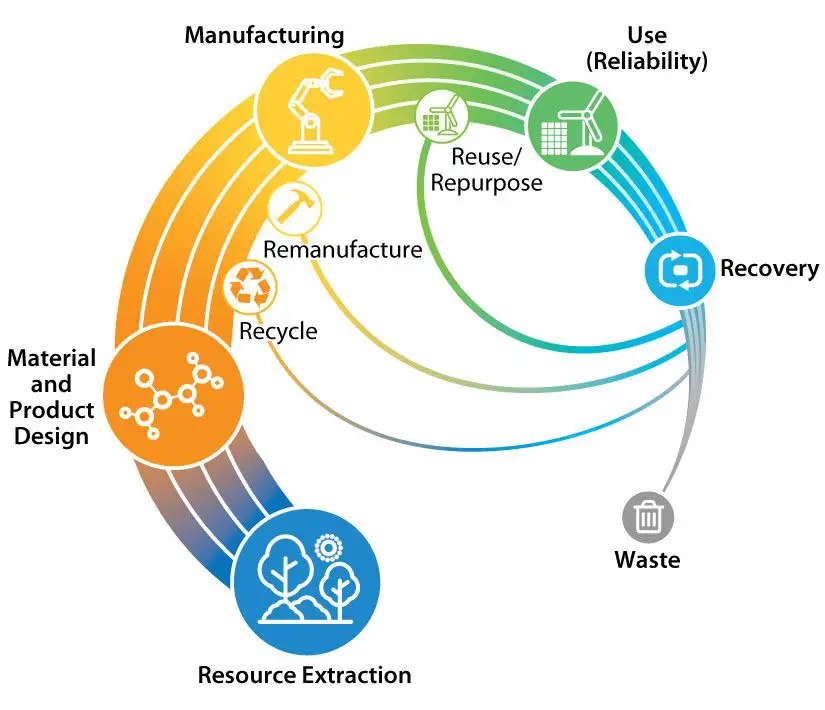
Reducing waste through circular economy practices is also important. This means designing products and systems to maximize reuse, refurbishment, and recycling. Strategies include using modular and upgradable components, taking back used products, and eliminating planned obsolescence. For energy systems, this could involve reusing electric vehicle batteries for energy storage [2].
Overall, sustainable materials and circular resource flows are critical for lowering the lifecycle impacts of energy production and consumption.
Green Buildings
Green buildings are designed and constructed in ways that reduce or eliminate negative impacts on the environment and occupants (GSGov, 2022). The goal is to promote resource and energy efficiency from construction to operation and maintenance (IBERDROLA, 2022). Key features of green building design include:
Energy Efficient Systems – Green buildings incorporate energy efficient HVAC, lighting, appliances, and building envelopes to reduce energy usage. Strategies include maximizing natural lighting, adding insulation, and installing energy recovery systems (GSGov, 2022).
Water Conservation – Low-flow plumbing fixtures, rainwater harvesting systems, greywater reuse, and drought-tolerant landscaping minimize water usage (IBERDROLA, 2022).
Sustainable Materials – Materials are chosen for durability, recycled content, and low emissions to reduce environmental impacts. Local and renewable materials are prioritized (GSGov, 2022).
Waste Reduction – Construction waste is reduced through modular design and prefabricated components. Recycling systems also cut down on operational waste (IBERDROLA, 2022).
The benefits of green buildings include lower operating costs, healthier indoor environments, reduced strain on local resources, and lower carbon emissions. Green design principles allow buildings to operate cleanly and efficiently while conserving natural resources (GSGov, 2022).
GSGov. (2022). Sustainable Design. https://www.gsa.gov/real-estate/design-and-construction/sustainability/sustainable-design
IBERDROLA. (2022). What is a Green Building + 10 Sustainable Buildings. https://www.iberdrola.com/sustainability/sustainable-green-buildings
Government Policies
The United States government has enacted several policies and regulations to help promote energy and environmental sustainability. Some key examples include:
<a href=”https://www.energy.gov/scep/slsc/policies-and-programs”>Federal appliance energy efficiency standards</a> that set minimum efficiency requirements for products like air conditioners, refrigerators and washing machines. These standards help drive adoption of more efficient products, saving consumers money and reducing energy use.
<a href=”https://www.sustainability.gov/policy.html”>Executive Order 13834</a> was issued in 2018 to improve energy and environmental management in federal operations. It set goals to optimize federal building performance, reduce vehicle fleet petroleum use, and prioritize purchasing of efficient and sustainable products.
The <a href=”https://www.epa.gov/laws-regulations/summary-energy-policy-act”>Energy Policy Act of 2005</a> established an energy efficiency resource standard for utilities, provided tax incentives for efficient buildings, expanded renewable energy, and implemented a host of other measures to reduce energy use and encourage sustainability.
Well-designed government policies like these can accelerate the adoption of energy-efficient practices and technologies, drive markets toward sustainability, and incentivize innovation.
Individual Actions
Individuals can make a significant collective impact on energy and environmental sustainability through their daily choices and actions. Here are some ways individuals can live more sustainably:
Reduce energy use by unplugging electronics when not in use, adjusting thermostat settings, and altering driving habits to reduce gasoline consumption (Native Eco). Simple changes like line drying clothes, eating lower on the food chain, and choosing organic products can also reduce your environmental impact (Biological Diversity).
In rural communities, promoting the use of common household appliances that utilize renewable energy sources can support electrification efforts and achieve sustainable energy for all (UNDP). Individuals can also advocate for sustainability policies and initiatives in their local communities.
While individual actions may seem small, collectively they can significantly reduce energy consumption, lower carbon emissions, conserve natural resources, and promote sustainable practices. By making conscientious sustainable choices in their daily lives, individuals can collectively drive larger scale changes towards energy and environmental sustainability.

